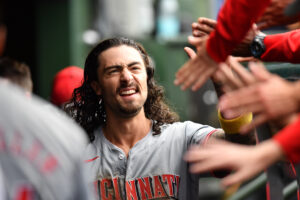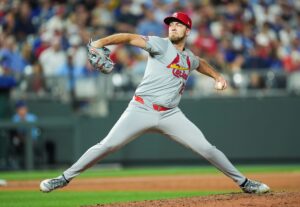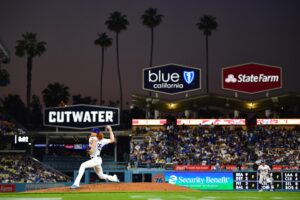It’s no secret, The San Francisco Giants have a terrible closer situation. Santiago Casilla, the Giants’ closer since 2013 has now blown eight saves this year, with 31 saves in 39 opportunites. Bruce Bochy has FINALLY said that he will go with a closer by committee. Unfortunately, that’s just not a permanent solution. The Giants’ bullpen is actually getting younger, with the additions of Derek Law and Hunter Strickland. Will Smith and Ty Blach are also key bullpen pieces, both under the age of 30. With Casilla getting older and some younger, dominant bullpen pitchers, the conversation has already begun. Who should be the Giants closer?
The San Francisco Giants Closer Conundrum
The Case (or lack thereof) For Santiago Casilla
Frankly, there is no case anymore. As long as all other options aren’t performing in the role, or are injured, that’s the only way he should be the closer anymore. The only reason he’s still even being considered for the role is Bruce Bochy’s loyalty to his longtime reliever. Casilla has been fantastic since he’s been a Giant. Bruce Bochy? A hall of fame manager, and easily the greatest manager in the history of the club. However, his unwavering loyalty to Santiago Casilla, up until Friday night, was inexplicable and indefensible. Six blown saves in 37 chances, those six contribute to the gap in the standings between the Dodgers and them. He’s giving up a little over one home run per nine innings pitched and a WHIP of 1.226. He’s had a save success rate of 79 percent which frankly just isn’t good enough. Casilla for closer? Please, no more. So then who?
The Case for Hunter Strickland
In a Twitter poll I ran, Hunter Strickland won as the favorite for closer. I think he would be a decent option, but maybe not a long-term option. The case for him? Well, he throws pure heat. Fangraphs has his average fastball velocity at 97, 95.9, and 97.6 (four seam, two seam, cutter). A changeup at 88, which is as fast as a Barry Zito‘s fastball, provides some relief from the heat for hitters. Opponents are hitting .211 off of him this season, and have a BABIP (Batting Average on Balls In Play) of .258. Opponents are making contact at above 80 percent on his pitches via Fangraphs. All his numbers are better than average for a bullpen pitcher in the bigs. How do those numbers compare to a top closer?
For Comparison, Kenley Jansen of the Los Angeles Dodgers, has an opponents batting average of .146 and a BABIP of .235. Not to mention his 0.65 WHIP. Those are the numbers expected of elite closers. Opponents are making contact 68 percent of the time via Fangraphs. With the Giants’ expectations, they need to have a closer of that caliber, or close.
The Case For Derek Law
Derek Law burst onto the scene this year, and quickly became the most trustworthy arm in the Giants’ bullpen. His numbers? At first glance they’re a bit similar to Hunter Strickland. He has a .212 Opponents Batting Average, and a BABIP of .271. While the numbers look similar to Strickland’s he’s actually inducing more swing and misses, with opponents making contact 77 percent of the time. Another thing Law has over Strickland is the type of Contact he’s inducing. According to Fangraphs, 50 percent of the contact made against him has resulted in a ground ball this year, and 27.1 percent of his pitches have resulted in a fly ball. Strickland’s contact results? They create the same amount of line drives, while Strickland creates slightly more fly balls (29.5 percent) and slightly fewer ground balls (48.1 percent).
A big difference here, Strickland, who creates more fly balls, has a homerun per fly ball rate of eight percent. Law comes in at five percent. Fielder Independent Pitching, or FIP shows how good a pitcher is at dealing with the things he can control. I’ll let Fangraphs explain their calculation of it to spare you, but basically it’s a statistic of things that a pitcher can control directly, such as Ks, BBs, HRs, and HBPs. Hypothetically, the lower the FIP, the better the pitcher is at doing the things he’s supposed to do. Strickland’s is 3.31, Law’s is a 2.34. For comparison, Jansen’s is a 1.34. Let’s also keep in mind this is all in Law’s rookie year. The Giants haven’t had a bullpen pitcher come into the big leagues like Law in a really long time.
Why Kenley?
In looking at Kenley Jansen’s numbers, it shows just how far off the Giants are from having a truly elite closer. To be fair, Jansen also didn’t make the jump to elite until this season. His previous seasons were more along the line of what Derek Law has done this year. Hunter Strickland has yet to have a season as successful as either of them. Recently I took a poll on the Last Word On SFG twitter account, and these were the results:
Who do you want as the #SFGiants closer?
— Last Word on SFG (@LWOS_SFGiants) September 8, 2016
Strickland won by a mile, even though my vote was actually for Derek Law. Derek Law is actually the best candidate to be a closer in the future, and here’s why:
Derek Law For Closer
Hunter Strickland’s game is predicated on blowing the ball by hitters. Unfortunately, he doesn’t leave the strike-zone as much with his pitches. He also doesn’t have command over his fastball within the zone. These things lead to elevated pitches which get crushed, as evident by his career HR/FB percentage of eight. Because of pitchers like Aroldis Chapman, high-velocity closers are a fad in MLB. Closers like Jim Johnson, Grant Balfour, Jonathan Broxton, Brian Wilson were great closers for a couple years. Their longevity though lies with the life in their arms. Unless they are physical freaks, throwing 95-100mph on a fastball that they throw 80 percent of the time will last three years tops. If Strickland were ever to sacrifice a couple MPHs of velocity for more control, then maybe I might consider changing my stance. That scenario is just unlikely though.
Derek Law doesn’t live in the strike-zone. He has enough movement, and enough control over his pitch location that he can get guys to swing at pitches that move from in, to out of the strike-zone. Then, the ability to pinpoint fastballs within the zone makes his arsenal, and pitching ability just that much more effective. If you take a look at the pitchers who made decade long careers as a closer, players like Mariano Rivera, Trevor Hoffman, and Brad Lidge, none of them threw harder than 95. They had genuine swing and miss stuff, despite the lack of velocity. If the Giants chose Strickland, there is a good chance we end up having this conversation two to three years down the road. If they chose Law? The Giants could potentially have their closer for the next decade.
Main Photo






